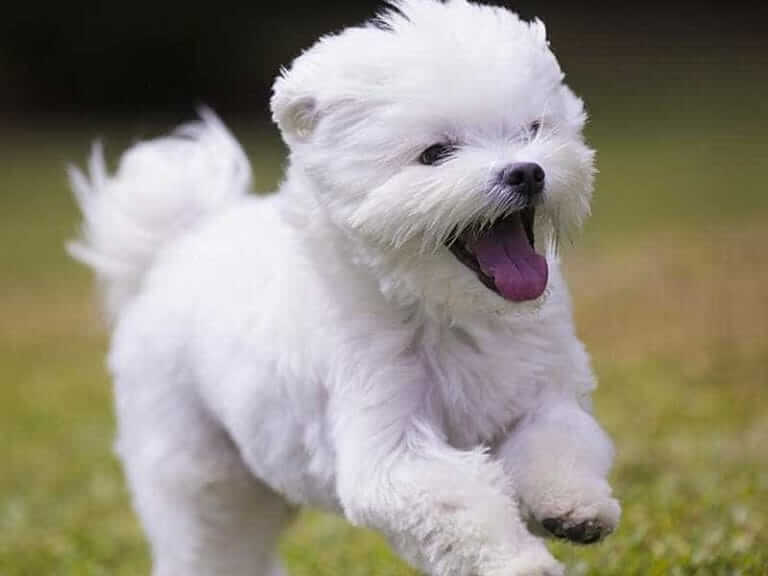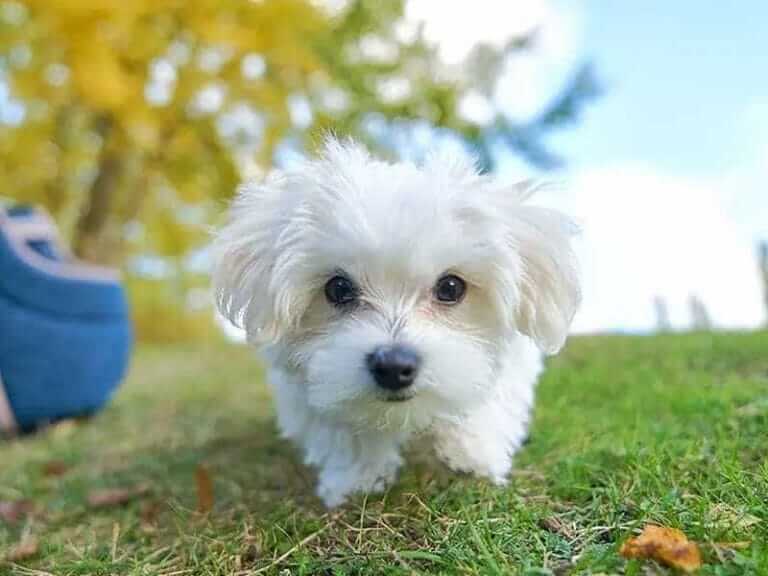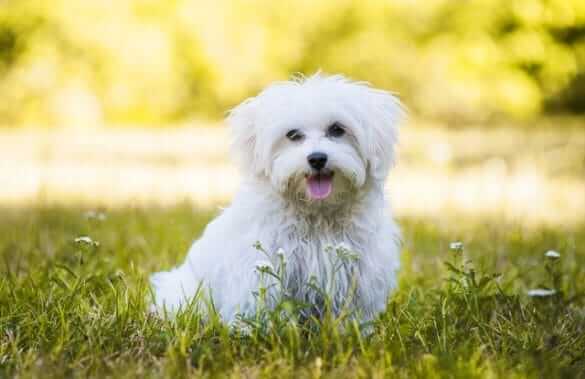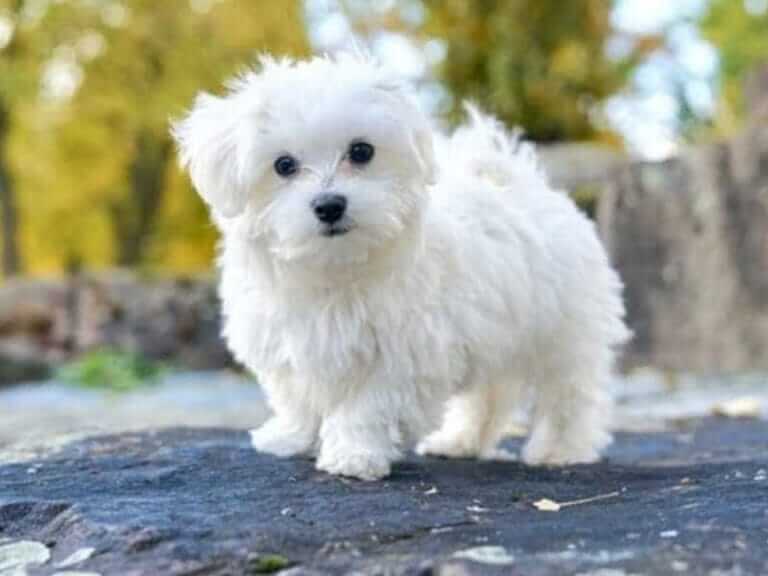The Maltese dog is one of the popular noble dog breeds in European countries, but few people know that it originates from the working dog breed of this area. Through the process of cross-breeding, the Maltese have become small, adorable, and have a luxurious princess-like appearance, and they have become the favorite choice of the aristocracy in France in the past. This article from Inkpawarts will help you better understand this breed.
Origin of Maltese Dog – Noble Dog
The Maltese dog is a breed that attracted the attention of many aristocracy in the 16th century. They originated from the island of Malta and have a long history. With their nobility and special charisma, they always attract people and receive widespread love.
Historical information shows that, at the end of the 15th century, the Mediterranean was the homeland of the Maltese dog breed, and they were often bred by the commoner classes, despite their delicate and beautiful appearance.

It was not until the 16th century, when explorers brought Maltese dogs to France, that they began to show their true class, and became a favorite choice of French aristocrats. They were even loved by King Henry VIII and the British royal family.
To make this breed more noble and adorable, many experts have carried out cross-breeding and experiments to reduce their size. However, these crossbreeds have made purebred genes less diverse, putting them in danger of extinction.
To prevent the extinction of this breed, people made efforts to restore and preserve the Maltese breed in the 18th century. By the 20th century, scientists succeeded in developing the ornamental Maltese dog breed and helped they become popular globally.
Maltese Dogs in Common
The Noble Maltese dog breed has a distinctive appearance and is easily recognizable. They bring elegance and loveliness that people can’t help but notice and love.
Maltese Dog Appearance
The Maltese is a small dog breed, weighing 2 to kg, with a slim body and sloping shoulder blades. Their hindquarters are unique and slightly protruding. The neck is long and delicate, giving flexibility to their lovely head.
Their heads are proportional to their bodies, and their skulls are slightly rounded. Dropped ears are set low and are heavily feathered. Dark eyes combined with a black nose and a medium-length, slim muzzle.

Their long, smooth fur creates a graceful and luxurious beauty. Long hair sweeps close to the ground, often tied to the top of the head or left hanging down. The typical fur color is pure white. They always show nobility, even when eating or drinking.
Maltese Dog Personality
The personality of the Noble Maltese dog is adorable, they often show docility and obedience. They make the owner feel loved and cared for.
If you are looking for a lovable friend who just needs to stay indoors and be held and stroked often, then this breed is a good choice for you. They are very approachable and love to be loved, always creating special emotions when their owners hug and caress them.
Although they do not need many lessons and do not require daily walks, walks and exposure to the outside environment are still necessary. They can participate in activities such as walking on a leash, playing ball, and searching for toys. However, it is necessary to avoid letting them come into contact with small children because Maltese are very small and can be injured if children tease them too much or feel threatened.
Maltese Dog Care
The Maltese dog is one of the dog breeds that requires the most sophisticated and meticulous care among all dog breeds. They are often beautified and wear expensive branded fashion products. To maintain the aristocratic look, owners must spend hours grooming and using specialized dog grooming tools.

In addition to brushing, keeping their coat wrapped is important to protect it from dirt and particles. If you have a short-haired Maltese, you also need to take good care of it. When you dress your dog, keep the following in mind:
- Choose a coat with good quality fabric to avoid causing pain and dermatitis to your dog.
- Be sure to clean the eye area to prevent the formation of eye rust, a problem that can be unsightly. Eye and ear care products for dogs will be helpful in this case.
- This breed often has a more pleasant smell than many other breeds, but can cause allergic reactions in sensitive people. Brush regularly and keep your dog’s coat clean and trimmed short to limit the amount of hair that causes allergic irritation.
Common disease in Maltese dogs
The Maltese dog breed has some unique health problems that owners need to pay attention to. Here are some of the common diseases:
Patellar Luxation
The knee joint of this breed tends to dislocate out of its normal position, this is because the patella – an important part that helps protect the knee – is disturbed. This condition often causes dogs to become lame and have difficulty moving. However, many Maltese dogs can still live a fairly normal life despite this problem.
Portosystemic Liver Shunt
This is a condition in which an abnormal blood vessel does not flow through the liver, reducing its ability to filter and detoxify waste and toxins from the blood.
Progressive Retinal Atrophy (PRA)
PRA is a slow visual degeneration that results in the gradual loss of photoreceptors in the back of the eye. As a result, the dog may gradually go blind, even before there are obvious signs.
Hypoglycemia
This is an acute condition, caused by an excessive drop in blood sugar. Symptoms may include weakness, loss of coordination, unsteadiness, and possibly seizures.
Epileptic
Usually starting when the dog is between six months and three years old, epilepsy mainly affects white dogs. Symptoms include a feeling of shakiness, incoordination, and rapid eye movement.
Tracheal Swelling Disease
The trachea, the important airway that carries air from the mouth to the lungs, tends to swell easily. This causes symptoms such as chronic cough and dryness.
Reverse Sneezing
This is a less serious condition that usually occurs when the dog is excited or eating or drinking quickly. This condition can end in a few minutes once the dog calms down.

First Aid and Treatment for Maltese Dog Diseases
Patellar Luxation
First Aid: Place the dog in a supine position and gently apply pressure to the knee to put it back in position.
Treatment: Severe cases may require surgery. This must be decided by your veterinarian.
Portosystemic Liver Shunt
First Aid: There is no first aid method at home. Needs to be taken to a veterinarian immediately.
Treatment: Surgery is the most effective treatment, often accompanied by a special diet and medication.
Progressive Retinal Atrophy (PRA)
First Aid: No first aid available. Take it to the vet to confirm.
Treatment: There is no cure, but placing items in your home in a permanent location can help your dog adapt.
Hypoglycemia
First Aid: Provide foods rich in sugars such as honey or sugar immediately.
Treatment: Consider diet and reduce excessive physical activity.
Epileptic
First Aid: Make sure your dog is in a safe environment, away from bright lights and loud noises.
Treatment: Based on the treatment plan recommended by your veterinarian, usually anti-seizure medication.
Tracheal Swelling Disease
First Aid: There is no first aid at home. Take it to the vet.
Treatment: Treatment may include the use of medications to reduce inflammation and, in severe cases, surgery.
Reverse Sneezing
First Aid: Gently stroke the dog’s throat and hold the dog in an inclined position to reduce tracheal pressure.
Treatment: This usually resolves on its own and does not require special treatment.
Note: Their illness needs to be diagnosed and treated according to the advice of a professional or veterinarian. You should not do it yourself at home to avoid making the illness worse for your lovely puppy.
Inkpawarts specializes in providing information about pet cat breeds, pet dogs, and other pets … Helping people better understand their pets.

